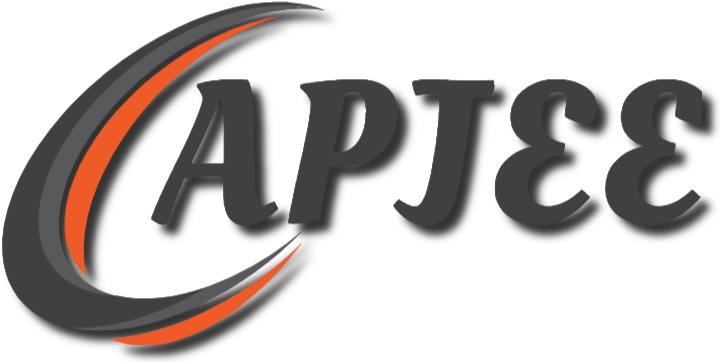Computation of time energy gain in D-3He mixture: Energy deposited through deuterium ignition beam
DOI:
https://doi.org/10.18034/apjee.v1i2.217Keywords:
Fast Ignition, Deuteron Beam, Energy, DynamicsAbstract
The fast ignition approach to ICF consists in first compressing the fuel to high density by a suitable driver and then creating the hot spot required for ignition by means of a second external pulse. If the ignition beam is composed of deuterons, an additional energy is delivered to the target with increased energy gain. Therefore ,in this innovative suggestion ,we consider deuterium beams for fast ignition in D+3Hemixture and solve the dynamical balance equations under the available physical conditions by considering a new average reactivity formula ,then we compute the energy gain in this mixture .Our computational results show that we can get energy gain value larger than 4 at resonant temperature (200keV)of D+3Hemixture. We select D+3Hefuel, because D+3Hereaction is very attractive from a theoretical point of view since it does not produced neutrons. The D+3Hebenefits include full-lifetime materials, reduced radiation damage, less activation ,absence of tritium breeding blankets ,highly efficient direct energy conversion, easier maintenance, proliferation resistance.
Downloads
References
A. Caruso and V. A. Pais, Nucl. Fusion 36, 745 (1996);Phys. Lett. A 243, 319 (1998).
A. Maksimchuk, S. Gu, K. Flippo, D. Umstadter, and V. Y. Bychenkov,Phys. Rev. Lett. 84, 4108 (2000).
A. Maksimchuk, S. Gu, K. Flippo, et al., Phys. Rev. Lett. 84, 4108 (2000).
C. Bathke, H. Towner, and G. H. Miley, Trans. Am. Nucl. Soc. 17,41 (1973).
C.Li and R.D.Petrasso,Phys.Plasmas.Vol.2,No.6,2460 (1995).
D. J. Rose and M. Clark, Jr., Plasmas and Controlled Fusion MIT Press, Cambridge, MA, (1965).
D.Baie-Quan ,Y.gian-Cheng,D.Mei-Gen,P.Li-Lin,Chin. Phys.Lett.Vol.19,No.7,962 (2002).
E. L. Clark, K. Krushelnick, J. R. Davies, et al., Phys. Rev. Lett. 84, 670 (2000).
G. H. Miley, Fusion Energy Conversion American Nuclear Society,Hinsdale, IL, (1976).
H. Schwoerer, S. Pfotenhauer, O. Jackel, K. U. Amthor, Ziegler, R. Sauerbrey, K. W. D. Ledingham, and T. Esirkepov ,Nature London439,445 (2006)
J D LindlPhys Plasmas 2 3933 (1995) and Phys Plasmas 11 339 (2004)
J. R. Rygg, J. A. Frenje, C. K. Li, F. H. Séguin, R. D. Petrasso,J. A. Delettrez, V. Yu. Glebov, V. N. Goncharov, D. D. Meyerhofer,P. B. Radha, S. P. Regan, and T. C. Sangster,PHYSICS OF PLASMAS14,056306(2007).
J.P.Freidberg , “Plasma Physics and Fusion Energy” ,Cambridge University Press ,New York (2007).
K. A. Tanaka, R. Kodama, H. Fujita, et al., Phys. Plas-mas 7, 2014 (2000).
M Tabak et al Phys Plasmas 1 1626 (1994)
M TEMPORAL J Honrubia, S Atzeni. Phys. Plas.9,3102,(2002)
M. L. Shmatov, J. Br. Interplanet. Soc. 57,362(2004).
M. L. Shmatov, J. Br. Interplanet. Soc. 60,180 (2007).
N. Naumova, T. Schlegel, V. T. Tikhonchuk, C. Labaune, I. V. Sokolov,and G. Mourou, Phys. Rev. Lett. 102, 025002 (2009).
N.G. Basov, S.Y. Guskov and L.P. Feokistov, J. Sov. Laser Res. 13, 396 (1992).
S .Pfalzner, “An Introduction to Inertial Confinement Fusion”, Published by CRC Press Taylor & Francis Group (2006).
S E Bodner et al. Phys Plasmas 5, 1901 (1998)
S. P. Hatchett, C. G. Brown, T. E. Cowan, et al., Phys. Plasmas 7, 2076 (2000).
V. Bychenkov, W. Rozmus, A. Maksimchuk, D. Umstadter, and C.Capjack, Plasma Phys. Rep. 27, 1017 (2001).
V. T. Tikhonchuk, T. Schlegel, C. Regan, M. Temporal, J.-L. Feugeas, P.Nicolaï, and X. Ribeyre, Nucl. Fusion 50, 045003 (2010).
XiaolingYang,George H. Miley,Kirk A. Flippo, and Heinrich Hora, PHYSICS OF PLASMAS 18, 032703 (2011)
Xing Z. Li, Qing M. Wei and Bin Liu, Nucl. Fusion 48 ,125003 (5pp) (2008).
--0--
Downloads
Published
Issue
Section
License









